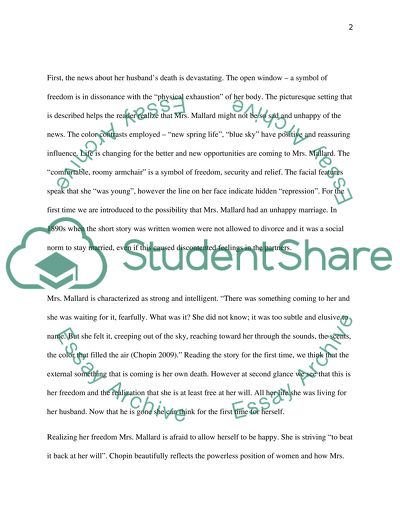Cite this document
(Kate Chopin's Character Mrs. Mallard Book Report/Review Example | Topics and Well Written Essays - 1000 words, n.d.)
Kate Chopin's Character Mrs. Mallard Book Report/Review Example | Topics and Well Written Essays - 1000 words. https://studentshare.org/literature/1506603-kate-chopins-character-mrs-mallard
Kate Chopin's Character Mrs. Mallard Book Report/Review Example | Topics and Well Written Essays - 1000 words. https://studentshare.org/literature/1506603-kate-chopins-character-mrs-mallard
(Kate Chopin'S Character Mrs. Mallard Book Report/Review Example | Topics and Well Written Essays - 1000 Words)
Kate Chopin'S Character Mrs. Mallard Book Report/Review Example | Topics and Well Written Essays - 1000 Words. https://studentshare.org/literature/1506603-kate-chopins-character-mrs-mallard.
Kate Chopin'S Character Mrs. Mallard Book Report/Review Example | Topics and Well Written Essays - 1000 Words. https://studentshare.org/literature/1506603-kate-chopins-character-mrs-mallard.
“Kate Chopin'S Character Mrs. Mallard Book Report/Review Example | Topics and Well Written Essays - 1000 Words”. https://studentshare.org/literature/1506603-kate-chopins-character-mrs-mallard.


